Miele PT8407EL manual

Operating instructions
Dryers
Gebruiksaanwijzing
Droogautomaten
PT 8257
PT 8337
PT 8407
PT 8507
PT 8807
To avoid the risk of accidents or damage to the machine it is |
en, nl - GB, NL |
essential to read these instructions before installing, |
M.-Nr. 07 713 432 |
commissioning and using it for the first time. |
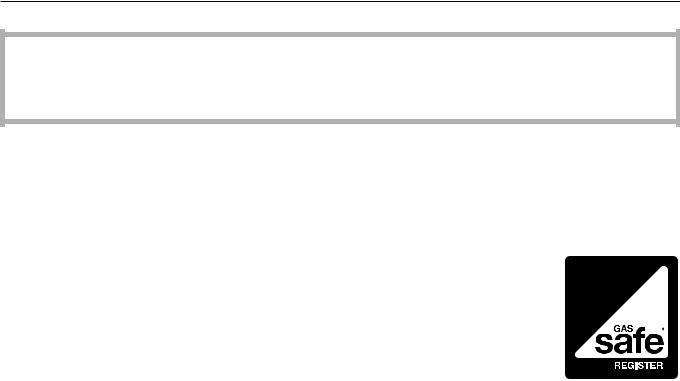
Gas safety precautions
This machine must be installed in accordance with local and national building and safety regulations by a suitably qualified engineer. In the U.K. this must be done for gas-heated machines by a Gas Safe registered engineer. Adequate ventilation must be present in the room in which the machine is operated.
It is essential to read these instructions before installing and operating the machine.
Gas-heated machines
Safety precautions to take if you smell gas
–Turn off the gas emergency control valve immediately. This is usually located near the gas meter.
–Do not enter a room with an open flame where there is a smell of gas.
–Eliminate all sources of ignition in a safe manner. Do not smoke, light cigarette lighters or matches.
–Do not operate electrical lights or switches, i.e. do not switch them "On" or "Off".
–Open all windows and doors to ventilate the area.
–If the smell of gas persists, evacuate the building.
In the UK you must now:
- Call the Gas Emergency Contact Centre (Tel: 0 800 111 999)
- For any gas work in the UK always use a Gas Safe registered engineer.
In other countries please follow relevant country specific procedures on gas.
Keep these instructions in a safe place and ensure they are made available to new users. They must be made aware of these Warning and Safety instructions.
All personnel working with this machine must be fully trained in all aspects of its use and safety.
2

Contents
Gas safety precautions . . . . . . . . . . . . . . . . . . . . . . . . . . . . . . . . . . . . . . . . . . . . . . . . . . . . . . . . . . . . . . . . . . . . . . 2
Warning and Safety instructions. . . . . . . . . . . . . . . . . . . . . . . . . . . . . . . . . . . . . . . . . . . . . . . . . . . . . . . . . . . . . . . 4 Caring for the environment . . . . . . . . . . . . . . . . . . . . . . . . . . . . . . . . . . . . . . . . . . . . . . . . . . . . . . . . . . . . . . . . . . . 6
Guide to the machine . . . . . . . . . . . . . . . . . . . . . . . . . . . . . . . . . . . . . . . . . . . . . . . . . . . . . . . . . . . . . . . . . . . . . . . . 7 Control elements. . . . . . . . . . . . . . . . . . . . . . . . . . . . . . . . . . . . . . . . . . . . . . . . . . . . . . . . . . . . . . . . . . . . . . . . . . . . . 8
Drying. . . . . . . . . . . . . . . . . . . . . . . . . . . . . . . . . . . . . . . . . . . . . . . . . . . . . . . . . . . . . . . . . . . . . . . . . . . . . . . . . . . . 10 Sort the laundry. . . . . . . . . . . . . . . . . . . . . . . . . . . . . . . . . . . . . . . . . . . . . . . . . . . . . . . . . . . . . . . . . . . . . . . . . . . . . 10 Before using for the first time . . . . . . . . . . . . . . . . . . . . . . . . . . . . . . . . . . . . . . . . . . . . . . . . . . . . . . . . . . . . . . . . . . 11 Switch the machine on and load the drum . . . . . . . . . . . . . . . . . . . . . . . . . . . . . . . . . . . . . . . . . . . . . . . . . . . . . . . . 11 Select a programme . . . . . . . . . . . . . . . . . . . . . . . . . . . . . . . . . . . . . . . . . . . . . . . . . . . . . . . . . . . . . . . . . . . . . . . . . 12
Card operation / coin mechanism . . . . . . . . . . . . . . . . . . . . . . . . . . . . . . . . . . . . . . . . . . . . . . . . . . . . . . . . . . . . . 15 Card access operation . . . . . . . . . . . . . . . . . . . . . . . . . . . . . . . . . . . . . . . . . . . . . . . . . . . . . . . . . . . . . . . . . . . . . . . 15 Drying using coin mechanism C 4060 / C 4065 / C 4070 . . . . . . . . . . . . . . . . . . . . . . . . . . . . . . . . . . . . . . . . . 15
Additional options . . . . . . . . . . . . . . . . . . . . . . . . . . . . . . . . . . . . . . . . . . . . . . . . . . . . . . . . . . . . . . . . . . . . . . . . . 16 Start date and time . . . . . . . . . . . . . . . . . . . . . . . . . . . . . . . . . . . . . . . . . . . . . . . . . . . . . . . . . . . . . . . . . . . . . . . . . . 16 Programme stop . . . . . . . . . . . . . . . . . . . . . . . . . . . . . . . . . . . . . . . . . . . . . . . . . . . . . . . . . . . . . . . . . . . . . . . . . . . . 17 Programme cancellation. . . . . . . . . . . . . . . . . . . . . . . . . . . . . . . . . . . . . . . . . . . . . . . . . . . . . . . . . . . . . . . . . . . . . . 17 Changing the programme order. . . . . . . . . . . . . . . . . . . . . . . . . . . . . . . . . . . . . . . . . . . . . . . . . . . . . . . . . . . . . . . . 17 Programme information . . . . . . . . . . . . . . . . . . . . . . . . . . . . . . . . . . . . . . . . . . . . . . . . . . . . . . . . . . . . . . . . . . . . . . 17
Programme overview . . . . . . . . . . . . . . . . . . . . . . . . . . . . . . . . . . . . . . . . . . . . . . . . . . . . . . . . . . . . . . . . . . . . . . . 18
Standard programmes . . . . . . . . . . . . . . . . . . . . . . . . . . . . . . . . . . . . . . . . . . . . . . . . . . . . . . . . . . . . . . . . . . . . . . . 18 Duvets. . . . . . . . . . . . . . . . . . . . . . . . . . . . . . . . . . . . . . . . . . . . . . . . . . . . . . . . . . . . . . . . . . . . . . . . . . . . . . . . . . . . 20 Mops (Buildings maintenance). . . . . . . . . . . . . . . . . . . . . . . . . . . . . . . . . . . . . . . . . . . . . . . . . . . . . . . . . . . . . . . . . 20
Fire service . . . . . . . . . . . . . . . . . . . . . . . . . . . . . . . . . . . . . . . . . . . . . . . . . . . . . . . . . . . . . . . . . . . . . . . . . . . . . . . . 21 Professional cleaners . . . . . . . . . . . . . . . . . . . . . . . . . . . . . . . . . . . . . . . . . . . . . . . . . . . . . . . . . . . . . . . . . . . . . . . . 21
Optional modules . . . . . . . . . . . . . . . . . . . . . . . . . . . . . . . . . . . . . . . . . . . . . . . . . . . . . . . . . . . . . . . . . . . . . . . . . . 23 Operating data . . . . . . . . . . . . . . . . . . . . . . . . . . . . . . . . . . . . . . . . . . . . . . . . . . . . . . . . . . . . . . . . . . . . . . . . . . . . . 23 Peak load cut-out . . . . . . . . . . . . . . . . . . . . . . . . . . . . . . . . . . . . . . . . . . . . . . . . . . . . . . . . . . . . . . . . . . . . . . . . . . . 24
Problem solving guide . . . . . . . . . . . . . . . . . . . . . . . . . . . . . . . . . . . . . . . . . . . . . . . . . . . . . . . . . . . . . . . . . . . . . . 25 Error messages. . . . . . . . . . . . . . . . . . . . . . . . . . . . . . . . . . . . . . . . . . . . . . . . . . . . . . . . . . . . . . . . . . . . . . . . . . . . . 25 After sales service . . . . . . . . . . . . . . . . . . . . . . . . . . . . . . . . . . . . . . . . . . . . . . . . . . . . . . . . . . . . . . . . . . . . . . . . . . 26 Cleaning and care . . . . . . . . . . . . . . . . . . . . . . . . . . . . . . . . . . . . . . . . . . . . . . . . . . . . . . . . . . . . . . . . . . . . . . . . . . 27 Fluff filter . . . . . . . . . . . . . . . . . . . . . . . . . . . . . . . . . . . . . . . . . . . . . . . . . . . . . . . . . . . . . . . . . . . . . . . . . . . . . . . . . . 27 Installation and connection . . . . . . . . . . . . . . . . . . . . . . . . . . . . . . . . . . . . . . . . . . . . . . . . . . . . . . . . . . . . . . . . . . 28 Levelling the machine. . . . . . . . . . . . . . . . . . . . . . . . . . . . . . . . . . . . . . . . . . . . . . . . . . . . . . . . . . . . . . . . . . . . . . . . 29 Installation on a raised plinth . . . . . . . . . . . . . . . . . . . . . . . . . . . . . . . . . . . . . . . . . . . . . . . . . . . . . . . . . . . . . . . . . . 29 Coin mechanism . . . . . . . . . . . . . . . . . . . . . . . . . . . . . . . . . . . . . . . . . . . . . . . . . . . . . . . . . . . . . . . . . . . . . . . . . . . . 29 Communication module XKM RS232 . . . . . . . . . . . . . . . . . . . . . . . . . . . . . . . . . . . . . . . . . . . . . . . . . . . . . . . . . . . . 29 Electrical connection . . . . . . . . . . . . . . . . . . . . . . . . . . . . . . . . . . . . . . . . . . . . . . . . . . . . . . . . . . . . . . . . . . . . . . . . 30 Air inlet and exhaust connection . . . . . . . . . . . . . . . . . . . . . . . . . . . . . . . . . . . . . . . . . . . . . . . . . . . . . . . . . . . . . . . 30 Steam connection . . . . . . . . . . . . . . . . . . . . . . . . . . . . . . . . . . . . . . . . . . . . . . . . . . . . . . . . . . . . . . . . . . . . . . . . . . . 30 Hot water connection . . . . . . . . . . . . . . . . . . . . . . . . . . . . . . . . . . . . . . . . . . . . . . . . . . . . . . . . . . . . . . . . . . . . . . . . 30 Gas connection. . . . . . . . . . . . . . . . . . . . . . . . . . . . . . . . . . . . . . . . . . . . . . . . . . . . . . . . . . . . . . . . . . . . . . . . . . . . . 30 Technical data . . . . . . . . . . . . . . . . . . . . . . . . . . . . . . . . . . . . . . . . . . . . . . . . . . . . . . . . . . . . . . . . . . . . . . . . . . . . . 31 Explanation of symbols on the data plate . . . . . . . . . . . . . . . . . . . . . . . . . . . . . . . . . . . . . . . . . . . . . . . . . . . . . . 32
Abbreviated operating instructions PT 8257 / 8337 / 8407 / 8507 / 8807. . . . . . . . . . . . . . . . . . . . . . . . . . . . . . 33
3
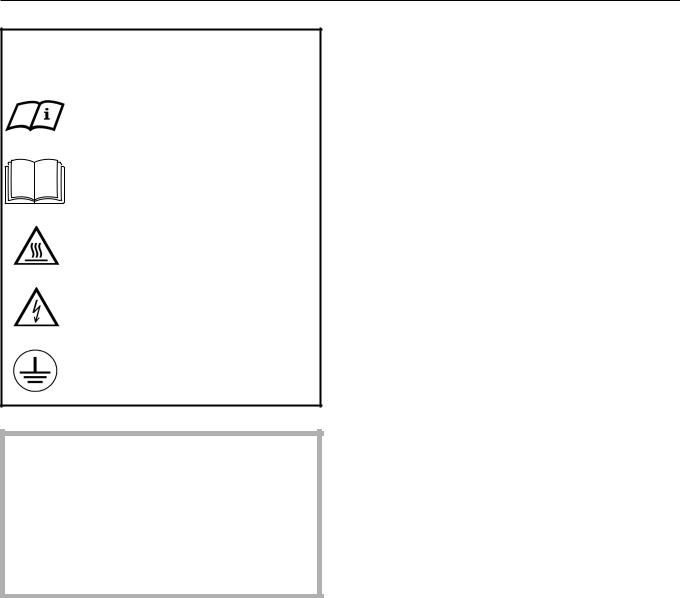
Warning and Safety instructions
Explanation of the Warning and Safety symbols on the machine
It is essential to read these operating instructions.
Please refer to specific instructions, e.g.
Installation instructions
Caution, hot surfaces.
Caution, voltage up to 1000 volts.
Earthing
To avoid the risk of accidents and damage to the machine read the operating instructions carefully before using it for the first time. They contain important information about the installation, safety, use and maintenance of the machine. Keep them in a safe place and ensure that new users are familiar with the content. Pass them on to any future owner of the machine.
Correct application
~This dryer must only be used for drying articles which were washed in water and which have a care label stating that the article is suitable for machine drying.
~To prevent the risk of fire, the following must not be dried in this tumble dryer (with the exception of those fabrics which can be dried in the Special Programmes specifically designed for them):
–fabrics which contain a large proportion of rubber, foam rubber or rubber-like materials.
–items which have been treated with inflammable cleaning agents.
–items which have been splashed with hair lacquer, hair spray, nail varnish remover or similar substances.
–items which have been soiled with oils or residues containing grease (kitchen oils, cosmetics etc.).
–items soiled with wax or other chemicals (e.g. mops and floor cloths).
–items with damaged padding or fillings (e.g. pillows, jackets).
–items soiled with grease or oil which have not been properly cleaned beforehand. Use heavy-duty detergents where necessary to clean heavily soiled garments, e.g. workwear. If necessary consult the detergent manufacturer for advice.
With sensitive fabrics there may be a danger of them self igniting if dried for too long. They should be removed as soon as the programme has finished or if there is a power cut.
Keep a fire extinguisher near the machine at all times.
~Do not unload laundry from the drum until the cooling down phase has been completed.
Hot laundry can self ignite and cause a fire when folded or put away.
~Check that all pockets of workwear etc are empty to avoid the danger of inflammable objects, e.g. cigarette lighters, matches, candles or cosmetics being placed in the dryer.
~If the dryer is installed in a public area the owner must ensure that it can be operated safely.
~This dryer must not be used outside.
Technical and electrical safety
~This machine must only be installed and commissioned by a Miele authorised technician.
~The electrical safety of this machine can only be guaranteed if connected to a correctly installed earthing system on site. It is most important that this basic safety requirement is present and tested regularly, and where there is any doubt, the on-site electrical wiring should be inspected by a qualified electrician. The manufacturer cannot be held liable for the consequences of an inadequate earthing system (e.g. electric shock).
~The machine is only completely isolated from the electricity supply either when it is switched off at the isolator switch or the mains fuse has been withdrawn.
~Repairs to electrical and gas heated appliances should only be carried out by a suitably qualified and competent person in accordance with local and national safety regulations. Repairs and other work by unqualified persons could be dangerous. The manufacturer cannot be held liable for unauthorised work.
~Faulty components must only be replaced by genuine Miele original spare parts. Only when these parts are fitted can the safety standards of the machine be guaranteed.
~This machine must not be operated in the same room as dry cleaning machines which use solvents containing chlorofluorocarbons (CFCs). Escaping vapours break down during combustion into hydrochloric acid which can have a detrimental effect on both the laundry and the machine. Even when such machines are installed in separate rooms, care should be taken to ensure that no exchange of air can take place.
4

Warning and Safety instructions
~The dryer must have a constant supply of fresh air.
Vapours containing chlorine, fluorine or other solvents must not be able to reach the dryer.
~The ventilation inlet to the dryer is located at the back of the machine. It must not be blocked or hindered in any way. Do not cover the machine lid with cloths or similar items.
~Benzine, petrol, paraffin or any easily flammable substance must not be stored or used near the tumble dryer. Fire and explosion risk.
~To ensure the correct performance of the machine and to prevent the risk of faults and fire, it is important to check the machine and carry out maintenance on a regular basis.
Use
~This tumble dryer must only be used when it is connected to a suitable ducting system. The installation site must be adequately ventilated.
~This tumble dryer is not intended for use by people with reduced physical, sensory or mental capabilities, or lack of experience or knowledge, unless they are supervised whilst using it or have been shown how to use it by a by a person responsible for their safety.
~Keep children away from the tumble dryer at all times. It is not a toy! To avoid the risk of injury do not allow them to play on or near it or to play with the controls. Supervise children whilst you are using it.
~Always close the drum door and the fluff filter compartment after use to avoid:
–the risk of children hiding things in the dryer
–the risk of children and small animals climbing into the drum and endangering their lives.
~Do not use a machine with damaged controls or cables. These must be repaired before it is used again.
~Do not damage, remove or bypass the safety features, fixtures and control elements of this machine.
~Any removable outer panels must be back in place, and all moving or electrical parts shielded before the machine is switched on.
~Whilst the dryer is in use the porthole glass and drum door frame can become very hot. Laundry will also be very hot if you remove it early.
~To prevent the risk of injury or scalding components carrying steam must not be touched.
~Always make sure that the drum is stationary before reaching into the machine to remove laundry. Reaching into a moving drum is extremely dangerous.
~Take care near the drum door hinges and the fluff filter compartment flap. Danger of injury. Ensure that you always use the handles.
~The drum door must be able to be opened to its fullest extent. This area must not be restricted by doors or structural features.
~Do not use the machine without the built-in fluff filter in place. Fire risk.
A damaged fluff filter must be replaced before the machine is used again.
Otherwise fluff and lint will cause a blockage in the airways, the heating and the vent ducting, and the correct functioning of the machine cannot be assured.
~Cleaning and disinfecting agents often contain chlorine-based substances. Do not let such agents come into contact with the stainless steel surfaces, as the chlorine can have a corrosive effect and cause rust. Use chlorine-free agents for washing and disinfecting and also for cleaning stainless steel surfaces to protect them from corrosion. If in doubt, confirm with the manufacturer that their product is suitable. If any agent containing chlorine comes into contact with the stainless steel surfaces, wipe it away immediately with clean water. Then dry with a soft cloth.
~Do not use a pressure washer or hose to clean the machine.
Gas heated dryers
~The gas mains connection point and the gas connection to the machine should be switched off for all cleaning and maintenance work and in the event of a fault.
~Warning. After commissioning the machine, and after any maintenance, conversion or repair work all components carrying gas from the gas tap to the burners should be tested for leakage. Test points on the gas tap and the burner are particularly important. The machine should be tested with the burner switched on and switched off.
Using accessories
~Accessory parts may only be fitted when expressly approved by Miele. Using spare parts or accessories from other manufacturers will invalidate the guarantee, and Miele cannot accept liability.
Disposing of your old machine
~Before disposing of an old machine, first make the door lock unusable. This way you will prevent children from accidentally locking themselves in and endangering their lives.
Keep these instructions in a safe and accessible place.
5
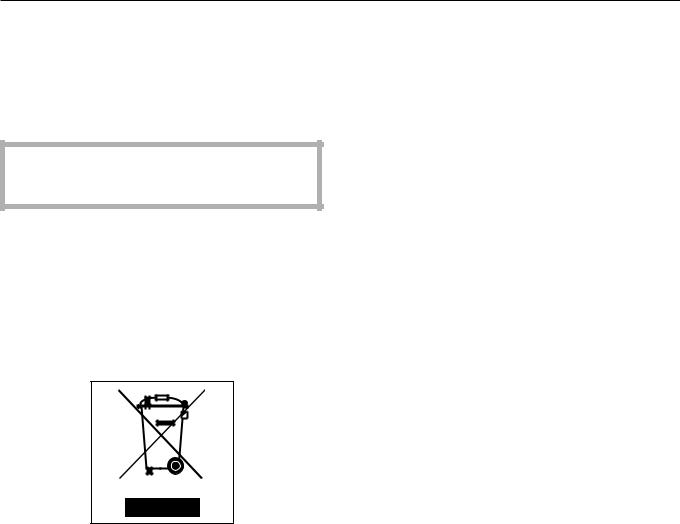
Caring for the environment
Disposal of the packing material
The transport and protective packing has been selected from materials which are environmentally friendly for disposal.
Rather than just throwing these materials away, please ensure they are recycled.
,Ensure that any plastic wrappings, bags, etc are disposed of safely and kept out of the reach of babies and young children. Danger of suffocation.
Disposing of your old machine
Electrical and electronic machines often contain materials which, if handled or disposed of incorrectly could be potentially hazardous to human health and to the environment. They are, however, essential for the correct functioning of your machine. Please do not therefore dispose of it with your household waste.
Please dispose of it at your local community waste collection / recycling centre or contact your Dealer for advice. Ensure that it presents no danger to children while being stored for disposal.
See the "Warning and Safety" section of this booklet for further details.
Tips on saving energy
Make sure that your laundry is thoroughly spun before drying. This saves time and energy.
Rinsing the laundry using hot water in the final rinse helps to reduce the residual moisture level, and the residual heat in the laundry will help keep processing time down, thus saving energy.
Sort textiles according to:
-fabric and weave,
-drying level required,
-residual moisture levels.
For greater economy dry a full load. Underloading is uneconomical. Overloading will impair the drying result and the laundry finish.
Ensure that the room is well ventilated.
6
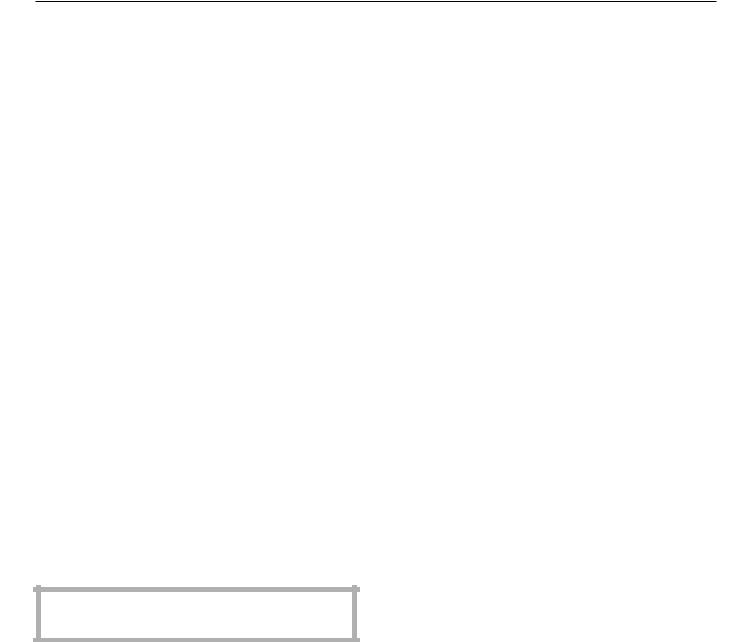
Guide to the machine
b a |
f |
j |
|
|
|
||
|
|
|
|
c
d g
h
ei
a Emergency stop switch
Only for use in an emergency.
Once the danger is no longer present, turn the grooved disc clockwise to disengage the switch.
Do not use the Emergency stop switch to turn off the dryer in normal use.
b Control panel
c Drum door
Pull the door handle to open the drum door.
d Access to fluff filter
Pull the handle to open the fluff filter compartment.
e 4 adjustable screw feet
f Electrical connection
g Air intake
h Exhaust connection
i Equipotential bonding
j Communication slot
7

Guide to the machine
Control elements a Display
1 |
Cottons extra dry |
0% |
|
|
|
|
|
2 |
Cottons dry |
0% |
|
|
|
|
|
3 |
Cottons damp |
20% |
|
|
FC |
|
A |
|
|
|
|
After switching on, the "Welcome" display will appear for a short time followed by the programme list. The most recently used programme is highlighted.
b Function buttons
The six buttons underneath the display are the function buttons. These buttons have specific functions depending on the status of the machine. These functions will be listed in the display above the buttons and will be highlighted once selected.
If the machine is reprogrammed to "Direct button allocation" the first 6 programmes listed in the display can be selected directly via these buttons.
c Start button
The lightring will flash when a selected programme can be started. Pressing the Start button will start the programme. After a programme has started, pressing this button will show the display as it was before the start of the programme.
d PC / Optical interface
This interface is used for transferring data to the control unit from a PC and vice versa.
e Rotary selector
Turning the selector brings up options and menus in the display.
Pressing the selector confirms your selection.
f Chip card reader (optional)
If the machine has been programmed for card operation, you can only use those programmes stored on the card to dry laundry.
Insert the card in the direction of the arrow (on the card).
g I Mains on switch
Switches the machine on.
h 0 Mains off switch
Switches the machine off.
8
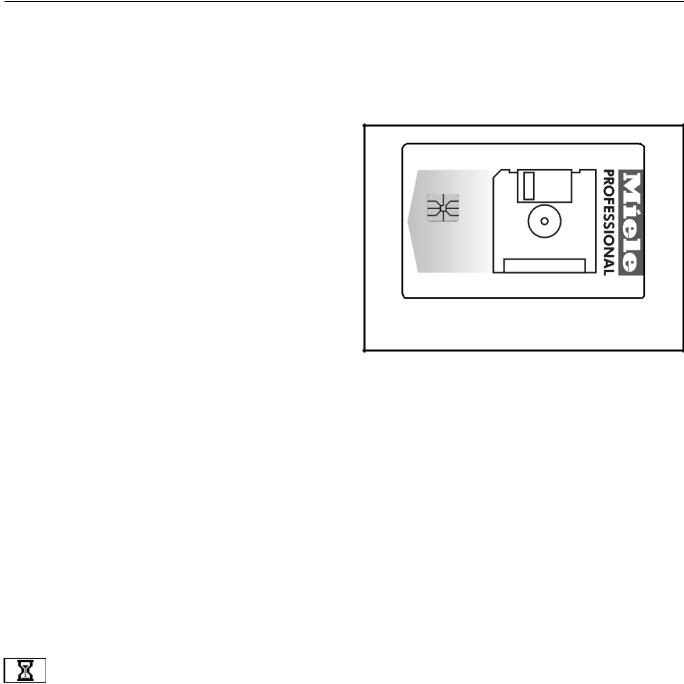
Guide to the machine
Function buttons
fStop/End
The function button on the right-hand side is used to stop a programme after it has started. Pressing it again finishes the programme.
[ Block plus
The relevant programme block (e.g. Pre-dry) is added to the programme.
FCSettings
Press this button to switch to another language temporarily.
m Start time
Pressing this button before the start of a programme displays the message that a start time can be selected.
K Information
Press this button to call up programme information in the display.
ü Change order
The order of the programme in progress can be changed or programme blocks can be repeated.
A Back
Takes you back to the previous display.
e/- Indicates that there is more information on next or previous line.
S Save
See the programming instruction booklet.
$Programme locked
Once a locked programme has been started, the End button can only be used to stop and cancel it during the first minute.
% Programme unlocked \ Operating data
Data transfer
Chip card operation
The chip card is supplied without any programmes. See the programming instruction booklet for information on transferring data from the control unit to the chip card and vice versa.
The chip card can store a maximum of 30 programmes, each with 6 blocks.
The back of the chip card can be labelled.
9

Drying
Sort the laundry
Not all textiles are suitable for machine drying.
Please read the instructions given on the garment care label.
The meaning of the care symbols: q = Dry at normal temperature r = Dry at low temperature
s = Do not tumble dry
Sort the laundry according to fibre type and weave to ensure even drying and to prevent the risk of damage to textiles.
,To prevent the risk of fire, the following must not be dried in this tumble dryer (with the exception of those fabrics which can be dried in the Special Programmes specifically designed for them):
-fabrics which contain a large proportion of rubber, foam rubber or rubber-like materials.
-items which have been treated with inflammable cleaning agents.
-items which have been splashed with hair lacquer, hair spray, nail varnish remover or similar substances.
-items which have been soiled with oils or residues containing grease (kitchen oils, cosmetics etc.).
-items soiled with wax or other chemicals (e.g. mops and floor cloths).
-items with damaged padding or fillings (e.g. pillows, jackets).
-items soiled with grease or oil which have not been properly cleaned beforehand. Use heavy-duty detergents where necessary to clean heavily soiled garments, e.g. workwear. If necessary consult the detergent manufacturer for advice.
The following textiles should not be machine dried:
Woollens and wool blends as these tend to matt and shrink. Pre-finish drying these using in the "Woollens" programme.
Pure linen tends to roughen if tumble dried. Please follow instructions given on the care label.
Important:
Textiles with large metal accessories such as buckles, hooks and zip tags should be placed in a laundry bag or a pillow case before drying. This is to protect the drum from scratches and dents during drying.
Garments with closed metal zips can cause the sensor electrodes in the drum ribs to be bridged.
This can cause the drying process to go on for too long, or to not finish at all. Open zips before drying.
Loopknit and woven textiles (e.g. T-shirts and underwear) have a tendency to shrink depending on their quality. This is made worse by over-drying. Do not use the "Cottons extra dry" for these textiles.
Starched laundry can be machine dried. Select the most appropriate programme for ironing by hand or machine.
Sort the laundry according to the level of dryness required. It is not necessary to sort according to size.
Duvet covers and pillow cases should be closed to prevent smaller items rolling up inside them.
For greater economy dry a full load. Underloading is uneconomical. Overloading will impair the drying result and the laundry finish.
Rinsing the laundry using hot water in the final rinse helps to reduce the residual moisture level, and the residual heat in the laundry will help keep processing time down, thus saving energy.
10
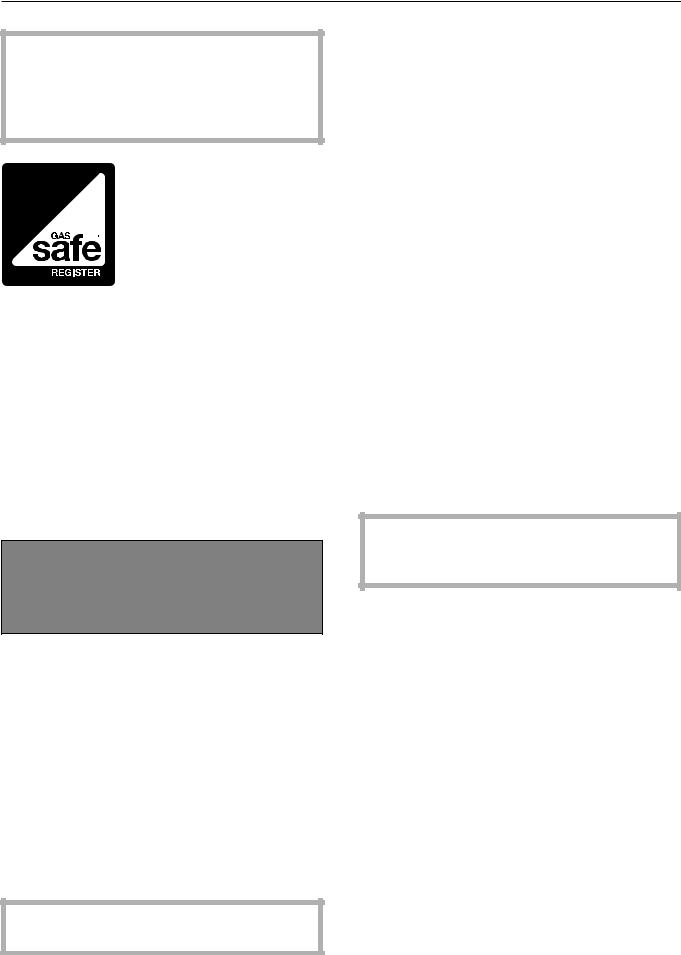
Drying
The machine must be commissioned by a Miele authorised technician before it is used for the first time. For gas heated machines in the U.K. this must be carried out by a Gas Safe registered technician.
Before using for the first time
Before loading the dryer with laundry you should wipe the internal drum surface with a soft, dry cloth.
Switch the machine on and load the drum
^Open all stopcocks for gas and steam as applicable.
^Switch on the on-site mains switch.
^Press the I "On" button in.
The Welcome screen will appear.
Miele
PROFESSIONAL
PT 8xx7
Welcome
This is followed by the programme list (with the most recently used programme highlighted).
1 |
Cottons extra dry |
0% |
|
|
|
|
|
2 |
Cottons dry |
0% |
|
|
|
|
|
3 |
Cottons damp |
20% |
|
|
FC |
|
A |
|
|
|
|
Select a programme using the rotary selector.
^Open the drum door.
^Load the drum.
The pre-sorted laundry should be loaded loosely in the drum.
Make sure any dispensing aids such as detergent balls have been removed from the laundry.
Max. load (dry weight of laundry)
PT 8257 |
PT 8337 |
PT 8407 |
|
PT 8507 |
|
PT 8807 |
|
|
|
|
|
|
|
|
Drum volume in litres |
|
|
|||
250 |
|
400 |
|
500 |
|
800 |
325 |
|
|
||||
|
|
|
|
|
|
|
|
1, 2, 3, 4, 5 Cottons |
|
|
|||
|
|
|
|
|
|
|
10-13 kg |
13*-16 |
16*-20 |
|
20*-25 |
|
32*-40 |
|
kg |
kg |
|
kg |
|
kg |
|
|
|
|
|
|
|
|
6, 7, 8 Minimum iron |
|
|
|||
|
|
|
|
|
|
|
5 kg |
6.6 kg |
8 kg |
|
10 kg |
|
16 kg |
|
|
|
|
|
|
|
|
|
9 Woollens |
|
|
|
|
|
|
|
|
|
|
|
4 kg |
5.2 kg |
6.4 kg |
|
8 kg |
|
12.8 kg |
|
|
|
|
|
|
|
|
10 Delicates / Synthetics |
|
|
|||
|
|
|
|
|
|
|
2 kg |
2.6 kg |
3.2 kg |
|
4 kg |
|
6.4 kg |
|
|
|
|
|
|
|
11, 12 Timed drying programmes |
||||||
|
|
|
|
|
|
|
10-13 kg |
13*-16 |
16*-20 |
|
20*-25 |
|
32*-40 |
|
kg |
kg |
|
kg |
|
kg |
|
|
|
|
|
|
|
|
13, 14 Proofing, Outerwear |
|
|
|||
|
|
|
|
|
|
|
5-6.6 kg |
6.6-9 kg |
8-11 kg |
|
10-13 kg |
|
16-20 kg |
|
|
|
|
|
|
|
* Hot water machines
To prevent the risk of damaging laundry make sure it cannot be trapped when the door is closed.
^ Close the drum door.
11

Drying
Select a programme
This machine is equipped with an electronic sensor system that continually monitors the moisture level of the laundry.
As soon as the required dryness is reached the laundry is cooled down. At the end of this cooling down phase the drying programme is automatically finished.
Standard programmes:
– |
For drying cotton and linen textiles |
|
1 |
Cottons extra dry |
0 % |
2 |
Cottons dry |
0 % |
3 |
Cottons damp |
20 % |
4 |
Cottons damp |
25% |
5 |
Cottons damp |
40 % |
– |
For drying synthetic and mixed fibre textiles |
||
6 |
Minimum iron dry |
0 % |
|
7 |
Minimum iron damp |
10 % |
|
8 |
Minimum iron damp |
20 % |
|
9 |
Woollens |
5 min. |
|
10 Delicates |
20 % |
|
|
– For airing textiles |
|
11Timed drying cold air |
15 min. |
–For drying small loads of laundry or for finishing drying individual items.
12Timed drying hot air 20 min.
1 |
Cottons extra dry |
0% |
|
|
|
|
|
2 |
Cottons dry |
0% |
|
|
|
|
|
3 |
Cottons damp |
20% |
|
|
|
|
|
|
FC |
|
A |
|
|
|
|
^Turn the rotary dial to select a programme (e.g. Programme 2 Cottons dry).
Select the additional option [ "Blockplus" if required
(this is not available on standard programmes)
^Confirm the selection of the programme by pressing the rotary selector.
The following (example) will appear in the display:
22 |
Cottons dry |
|
10.0 / 13.0 kg |
|
|
|
|
0 % |
Drying |
|
70°C |
|
Cooling down |
|
e |
[ |
|
m |
A |
|
|
|
|
^If wished you can now select a programme block, e.g. Pre-drying by pressing the [ "Blockplus" function button.
When the [ "Blockplus" function button is pressed, the following will appear in the display:
2 2 |
Cottons dry |
10.0 / 13.0 kg |
24 % |
Pre-drying |
|
0 % |
Drying |
e |
[ |
m |
A |
|
|
|
The [ field is highlighted.
Press the function button again to deselect the function.
If you do not wish to make any further alterations to the programme:
^ Press the "Start" button. The programme will start.
If you wish to make alterations before the start of the programme, e.g. to the load size, temperature or residual moisture:
^Confirm the selection of the programme by pressing the rotary selector.
The following (example) will appear in the display:
2 |
Cottons dry |
10.0 / 13.0 kg |
|
|
|
0 % |
Drying |
70°C |
|
Cooling down |
e |
|
m |
A |
The max. load will be shown at the far right of the display.
12

Drying
Load weight
You can enter the weight of the load manually before the start of the programme.
2 |
Cottons dry |
10,0 |
13.0 kg |
|
|
|
|
0 % |
Drying |
70°C |
|
|
Cooling down |
|
e |
|
m |
|
A |
^Turn the rotary dial to highlight the load. Press the dial to confirm your selection. Turn the dial to alter the weight and confirm your selection by pressing it.
Temperature in 1 °C increments from cold, 30 to max. 80 °C .
^ Turn the rotary dial to select the "Temperature" field (70 °C for drying) and press it to confirm your selection.
2 |
Cottons dry |
|
13.0 kg |
|
|
|
|
0 % |
Drying |
70°C |
|
|
Cooling down |
|
e |
|
|
||
|
m |
|
A |
^ Turn the rotary dial to alter the temperature value and then press it to confirm your selection.
Residual moisture in 1 % increments from -4 to 40 %.
^Turn the rotary dial to select the "Residual moisture" field (0 %) and press it to confirm your selection.
2 |
Cottons dry |
13.0 kg |
|
|
|
0 % |
Drying |
70°C |
|
Cooling down |
|
|
|
|
|
m |
A |
^Turn the rotary dial to alter the residual moisture level and then press it to confirm your selection.
^Press the Start button and the programme selected will commence
Once a programme has started the programme sequence will appear in the display.
2 |
Cottons dry |
|
|
0 % |
Drying |
|
>40 %{ |
|
Cooling down |
Ready at 12:35 |
|
|
m |
K |
f |
|
|
|
|
In the 2nd line of the display, drying in this example, the actual residual moisture level (>40%) and the symbol for { Electric or * Gas heating switched on will also be shown. The 3rd line displays the following programme block.
The time that the programme will finish (12:35) is shown on the right hand side of the display.
The programme end display has a self-learning function and will not show an accurate reading until the programme has been run several times.
At the end of a programme
2 |
Cottons dry |
|
|
|
Programme finished |
|
|
|
|
Anti-crease |
|
Ready at 12:35 |
||
|
m |
FC |
K |
f |
|
|
|
|
|
The programme end time is displayed,the buzzer sounds and the anti-crease phase commences. The drum will rotate at intervals to keep the laundry from creasing.
This is useful if laundry is not going to be unloaded as soon as the programme finishes.
^Open the drum door.
^Unload the drum.
Make sure nothing is left behind in the drum. If items are left in the dryer, they could be damaged by overdrying when the dryer is next used.
,Do not unload laundry from the drum until after the cooling down phase has been completed. Hot laundry can self-ignite and cause a fire when folded or put away.
^ Check the fluff / lint filter and clean if necessary.
2 Cottons dry Programme finished Check lint filter
A
A reminder will appear in the display when the filter need to be cleaned. The filter should be cleaned as soon as the programme finishes.
13
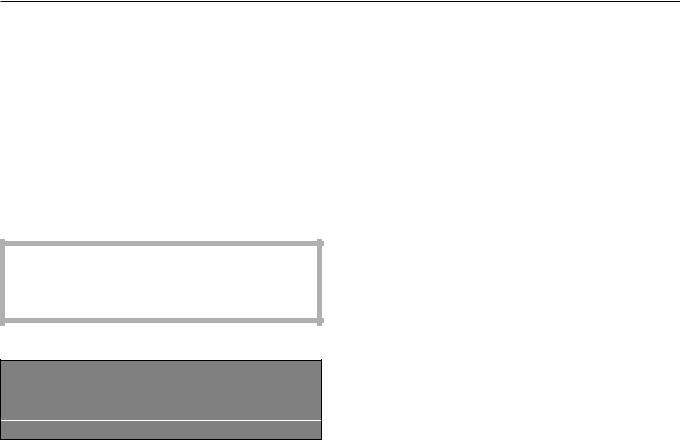
Drying
If no more laundry is to be processed:
^Close the drum door
^Press the 0 "Off" button to switch the machine off.
^Switch off the on-site mains switch.
^Close all stopcocks for gas and steam as applicable.
Adding or removing items
The drum door can be opened during a drying programme to remove or add items if necessary.
,Always make sure that the drum is stationary before reaching into the machine to remove laundry. Reaching into a moving drum is extremely dangerous!
2 Cottons dry
Programme stop
Door open. Please close the door.
FC f
To continue the drying programme: ^ Close the drum door
The fan will switch itself on automatically if the temperature in the drum is too high.
^Press the "Start" button and the programme selected will continue.
14

Card operation / coin mechanism
Cards on which a programme has been saved can only be used on the machine type for which they have been written.
Unwritten cards can be used universally.
^Press the "On" I button to switch the machine on.
The Welcome screen will appear.
^ Insert the card in the reader.
The programmes listed on the card will appear in the display.
Card operation
17 |
Protective clothing |
45 °C |
|
|
|
|
|
18 |
Minimum iron |
60 °C |
|
|
FC |
|
A |
|
|
|
|
^Use the rotary selector to highlight the programme you want to use. Press the rotary dial to select the programme you have highlighted.
^Press the Start button. The programme will start.
After pressing the "Start" button you can remove the card from the reader. The programme is deleted from the machine's memory once it has finished.
,Never insert any other card or object into the card reader!
If the card is inserted the wrong way round the following message will appear in the display:
§ |
Card fault |
|
|
Card incorrectly inserted in card reader. |
|||
|
|||
|
ü |
A |
|
|
|||
|
|
|
|
^Insert the card the right way round in the card reader.
If the card is not the right one for the machine it is being used in, the following message will appear in the display:
Card operation
Programmes on the card are only suitable for machine type PT 8507
A
^Insert the correct card for the machine in the card reader.
Card access operation
Programmes requiring special procedures are written onto a card which is then used to run the programme. "Card access" has be activated via the supervisor level in the machine.
The machine will then only run programmes by using a card (on which one programme has been saved).
Programmes in the machine's control unit cannot then be accessed.
Drying using coin mechanism C 4060 / C 4065 / C 4070
If the machine is not operated in the following order you will lose your money or tokens!
A Load the drum and close the door.
B Press the I "On" button. C Select a programme D Insert coins or tokens. E Press the "Start" button.
15

Additional options
Language selection
The language shown in the display can be changed briefly before starting a programme if you wish. To do so use the button underneath the flag symbol.
1 |
Cottons extra dry |
0% |
|
|
|
|
|
2 |
Cottons dry |
0% |
|
|
|
|
|
3 |
Cottons damp |
20% |
|
|
|
|
|
|
FC |
|
A |
|
|
|
|
If you press the FC button the following will appear in the display:
Settings |
|
Back <- |
|
|
|
|
|
Main menu |
|
Language |
|
|
|
|
|
|
|
Supervisor level |
|
|
|
|
|
|
FC |
|
A |
|
|
|
|
^Press the rotary dial to confirm your selection of the
"Language" menu.
Settings |
deutsch |
Language F |
|
english (GB) |
|
|
|
|
español |
|
|
FC |
A |
|
|
^Turn the rotary dial to highlight the language you want and then press the dial to confirm your selection.
The FC function button can be pressed to change to a different language temporarily. By highlighting the language the display will immediately change to show the language selected. If the programme is not started, or no other buttons or controls are activated in the next 5 minutes the language will revert back to the default setting.
The language will revert back to the default setting 5 minutes after the end of a programme with the door open.
Start date and time
If you want a programme to start at a later time use the m button for "Start date and time".
To set a date and time
After selecting your programme, the following (example) will appear in the display:
2 |
Cottons dry |
13.0 kg |
0 % |
Drying |
70°C |
|
Cooling down |
e |
|
m |
A |
^ Press the m "Start date and time" button.
The following (example) will appear in the display:
2 |
Cottons dry |
13.0 kg |
||
|
|
|
|
|
Start time: |
16 |
: 10 |
Start date: 2.4.2003 |
|
|
|
|
|
|
After selection press the start button.
m A
The current time and date will then appear. The input field for hours will be highlighted.
^Press the rotary dial to change the hour.
Turn the rotary dial to alter the hour and then press it to confirm your selection.
^Then turn the rotary dial to select the "Minutes" field and press it to confirm your selection.
Turn the dial to alter the minutes and then press it to confirm your selection.
^Then turn the rotary dial to select the "Start date" field and press it to confirm your selection.
Turn the dial to alter the date and then press it to confirm your selection.
^Do the same for the month and the year.
After setting the required start date and time:
^Press the Start button and the programme selected will commence at the time specified.
The display will now contain the following information:
2 |
Cottons dry |
|
13.0 kg |
0 % |
Drying |
|
|
16:15 -2.4.2009 |
Start 6:00-3.4.2009 |
||
|
|
m |
A |
|
|
|
|
The current time and date as well as the start time will be displayed.
^If the door is opened again you will have to press the Start button again.
To cancel the start time and date function
Press the m "Start date and time" button again or press A"Back", and any changes will be rejected.
16

Additional options
Programme stop
To halt the programme press the f button. The programme remains stationary.
2 |
Cottons dry |
|
Programme stop |
|
|
|
|
|
Press the start button. |
|
|
|
ü |
f |
To continue the programme press the "Start" button.
Programme cancellation
To cancel a programme press the f "Stop/End" button twice in succession.
Changing the programme order
The order of the programme in progress can be changed or programme blocks can be repeated.
^ Press the f button and the programme will stop.
2 |
Cottons dry |
|
Programme stop |
|
|
Press the start button. |
|
|
|
|
|
|
ü |
f |
^After pressing the ü button the current area or block will appear in the display.
See also "Programme structure" in the Progamming Manual.
Reorganise -> 2 Cottons dry
Programme stop
Area 1: Drying |
e |
S |
A |
|
|
Area 1: Drying |
|
Block 1: Pre-drying |
|
|
- |
S |
A |
^Turn the rotary dial to select the area, and then press it to confirm your selection.
Select Area: 1 Drying, or 2 Cooling down and confirm your selection.
^Turn the rotary dial to select the block and then press it to confirm your selection.
Select Block: Drying 1-10, or Cooling down 1-10 and confirm your selection.
^Press the S "Save" button and then press "Start" to reorganise the programme order or press the A
"Back" button to go back to programme stop and not change the programme order.
Programme information
Pressing the K "Information" button will call up further information about the programme e.g.:
2 |
Cottons dry |
|
|
|
|
|
|
Start date and time: 10.7.2009 |
|
|
|
|
|
e |
|
Start time: 9:47 |
|
||
|
m |
K |
f |
|
|
|
|
Time after start: 0h 23 min |
|
|
|
|
|
|
|
Time left: 0h 11min |
|
|
|
Progr.-End: 10: 21 h |
|
e |
|
|
|
|
|
Area: 1 Drying |
|
|
|
Block: 1 Pre-drying |
|
|
|
Actual exhaust air temp. 59 °C |
|
e |
|
|
|
|
|
Rqrd. exhaust air temp. 74 °C |
|
|
|
Peak load: No |
|
|
|
Anti-crease: 3 s./87s./60 min |
|
e |
|
|
|
|
|
2 |
Cottons dry |
|
|
|
- |
||
Exhaust / Recirculation: Recirculation |
|||
|
|
|
|
Block end signal Yes |
|
|
|
|
|
|
A |
|
|
|
|
^Press the A "Back" button to return to the programme sequence display.
17

Programme overview
Standard programmes
|
Programme |
Fabric type |
max. load capacity |
|||
|
|
|
|
(kg, dry weight) |
||
|
|
|
|
|
||
1 |
Cottons extra dry 0 % |
Multi-layered and bulky cotton and linen textiles which do |
|
|
||
|
(Normal+) |
74°C |
not get dry in the Cottons dry programme. |
|
|
|
|
|
|
|
|
|
|
|
|
|
|
|
|
|
2 |
Cottons dry 0 % |
|
Single and multi-layered cotton and linen textiles. |
|
|
|
|
(Normal) |
74°C |
|
|
|
|
|
|
|
PT 8257 |
10-13 |
||
|
|
|
|
|||
3 |
Cottons damp 20 % |
|
||||
|
(Machine iron) |
74°C |
|
PT 8337 |
13-16 |
|
|
|
|
|
PT 8407 |
16-20 |
|
|
|
|
|
|||
|
|
|
Cotton and linen textiles which are to be machine ironed. |
PT 8507 |
20-25 |
|
|
|
|
||||
4 |
Cottons damp 25% |
|
PT 8807 |
32-40 |
||
|
(Machine iron) |
74°C |
|
|||
|
|
|
|
|||
|
|
|
|
|
||
|
|
|
|
|
||
5 |
Cottons damp 40 % |
|
|
|
||
|
(Machine iron) |
74°C |
|
|
|
|
|
|
|
|
|
||
|
|
|
|
|
|
|
6 |
Minimum iron dry 0 % |
|
|
|
||
|
(Normal) |
60°C |
|
|
|
|
|
|
|
Synthetic, cotton and mixed fibre textiles which are to be |
PT 8257 |
5.0 kg |
|
|
|
|
||||
|
|
|
||||
7 |
Minimum iron damp 10 % |
machine ironed. |
PT 8337 |
6.6 kg |
||
|
(Machine iron) |
60°C |
||||
|
|
PT 8407 |
8.0 kg |
|||
|
|
|
|
|||
|
|
|
|
|||
|
|
|
|
PT 8507 |
10 kg |
|
8 |
Minimum iron damp 20 % |
|
PT 8807 |
16 kg |
||
|
(Machine iron) |
60°C |
|
|
|
|
|
|
|
|
|
|
|
|
|
|
|
|
|
|
9 |
Woollens |
|
For fluffing up woollen garments. This programme does |
PT 8257 |
4 |
|
|
(5 min.) |
74°C |
not dry woollens. |
PT 8337 |
5.2 |
|
|
|
|
|
PT 8407 |
6.4 |
|
|
|
|
|
|||
|
|
|
|
PT 8507 |
8 |
|
|
|
|
|
PT 8807 |
12.8 |
|
10 Delicates 20 % |
|
Delicate cotton, synthetic and mixed fibre fabrics. |
PT 8257 |
2 |
||
|
40°C |
|
PT 8337 |
2.6 |
||
|
|
|
|
PT 8407 |
3.2 |
|
|
|
|
|
|||
|
|
|
|
PT 8507 |
4 |
|
|
|
|
|
PT 8807 |
6.4 |
|
11 Timed drying cool air |
Items which need airing only. |
|
|
|||
|
(15 min.) |
|
PT 8257 |
10-13 |
||
|
|
|
|
PT 8337 |
13-16 |
|
|
|
|
|
|||
|
|
|
|
PT 8407 |
16-20 |
|
12 Timed drying hot air |
For drying small loads of laundry or for finishing drying |
|||||
PT 8507 |
20-25 |
|||||
|
(20 min.) |
74°C |
individual items. |
|||
|
PT 8807 |
32-40 |
||||
|
|
|
|
|||
|
|
|
|
|||
|
|
|
|
|
|
|
18
|
Programme overview |
||
|
|
|
|
Programme |
Fabric type |
max. load capacity |
|
|
|
(kg, dry weight) |
|
|
|
|
|
13 Proofing |
For drying microfibre fabrics, skiwear, fine, closeweave |
|
|
(Normal) 60°C |
cotton garments (poplin) or tablecloths which are |
|
|
|
suitable for drying in a tumble dryer and have been |
|
|
|
treated to provide a water and dirt resistant finish. |
PT 8257 |
5 - 6.6 |
|
|
||
|
|
||
This programme includes a proofing fixing phase. |
PT 8337 |
6.6 - 9 |
|
Only use proofing agents containing fluorochemical compounds which are stated by the |
PT 8407 |
8 - 11 |
|
manufacturer as being "suitable for use on membrane textiles". |
PT 8507 |
10 - 13 |
|
Fire hazard. Do not dry items which have been treated with proofing agents containing |
PT 8807 |
16 - 20 |
|
|
|
||
paraffin. |
|
|
|
14 Outerwear |
Outerwear which is suitable for drying in a tumble dryer. |
|
|
60°C |
|
|
|
|
|
|
|
|
|
|
|
Temperatures given refer to extracted air temperature.
19

Programme overview
Duvets
Programme |
Fabric type |
max. load capacity (kg, dry weight) |
||
|
|
|
|
|
Down duvets |
Feather and down filled duvets and pillows. |
PT 8257 |
1 single duvet or 2 pillows (10) |
|
74°C, Dries to 0 % residual moisture, Tumble phase, Cooling down |
PT 8337 |
3 pillows or |
(13) |
|
phase |
|
|
1 pillow + 1 single duvet |
|
|
PT 8407 |
4 pillows or |
(16) |
|
|
Synthetic duvets and pillows. |
|||
Synthetic duvets |
|
2 pillows + 1 single duvet or |
||
74°C, Dries to 0 % residual moisture, Tumble phase, Cooling down |
|
2 single duvets |
|
|
phase |
|
PT 8507 |
5 pillows or |
(20) |
Natural fibre blankets |
Natural fibre quilts and blankets. |
|
3 pillows + 1 single duvet or |
|
|
2 single duvets |
|
||
|
|
|
|
|
74°C, 3 min. drying phase, Cooling down phase. |
|
|
||
PT 8807 |
8 pillows or |
(32) |
||
Natural fibre blankets and quilts must not be dried completely in a |
|
3 pillows + 3 single duvet or |
||
tumble dryer, as this could cause the fibres to matt. These should |
|
4 single duvets |
|
|
only be partially dried in a tumble dryer. |
The loads quoted are estimates and will |
|||
|
|
|||
|
|
vary depending on the size and volume |
||
|
|
of the duvets. |
|
|
Mops (Buildings maintenance)
,Items that have not been washed thoroughly and may still contain residual wax or chemicals are a fire hazard.
Wash heavily soiled items very thoroughly before drying them, ensuring that you use sufficient detergent and select a high temperature. If in doubt, wash the items several times.
Programme |
|
Fabric type |
max. load capacity |
||
|
|
|
(kg, dry weight) |
||
|
|
|
|
|
|
Mops |
Cotton mops |
|
PT 8257 |
10 |
|
|
|
|
PT 8337 |
13 |
|
74°C, Dries to 0 % residual moisture, |
Cooling down phase. |
||||
PT 8407 |
16 |
||||
Microfibre mops |
Microfibre mops |
||||
PT 8507 |
20 |
||||
|
|
|
|||
60°C, Dries to 0 % residual moisture, |
Cooling down phase. |
||||
PT 8807 |
32 |
||||
Cleaning cloths |
Microfibre cloths, dusters |
PT 8257 |
5.6 |
||
60°C, Dries to 0 % residual moisture, |
Cooling down phase. |
PT 8337 |
7 |
||
PT 8407 |
8.6 |
||||
|
|
|
|||
|
|
|
PT 8507 |
11 |
|
|
|
|
PT 8807 |
17.6 |
|
Temperatures given refer to extracted air temperature.
20

Programme overview
Fire service
Programme |
Fabric type |
max. load capacity (kg, dry weight) |
||||
|
|
|
|
|||
Face masks |
Face masks with |
|
max. no. holders / masks |
|||
|
head straps |
PT 8257 |
|
4 |
8 |
|
50°C, 45 min. drying phase, Cooling down phase. |
PT 8337 |
|
4 |
12 |
||
PT 8407 |
|
4 |
16 |
|||
Breathing masks may only be dried if special holders (available as an |
|
|||||
PT 8507 |
|
4 |
12 |
|||
optional accessory) are fitted in the drum. |
|
|||||
PT 8807 |
|
4 |
16 |
|||
|
|
|
||||
Protective clothing |
Protective clothing (e.g. as used by the fire |
PT 8257 approx. 1 - 2 suits |
||||
|
brigade), overalls, jackets, trousers |
(1 jacket + 2 trousers or 2 jackets) |
||||
|
|
PT 8337 approx. 2 suits (or 3 jackets) |
||||
74°C, Dries to 0% residual moisture, Tumble phase, Cooling down |
||||||
PT 8407 approx. 3 suits |
||||||
phase |
|
|||||
|
PT 8507 approx. 3 - 4 suits |
|||||
For best results, dry items inside out. |
||||||
PT 8807 approx. 6 suits |
||||||
Reproof protect. |
For all textiles that have been treated with a |
|||||
|
|
|
|
|||
clothing |
proofing agent |
PT 8257 |
5 |
- 6.6 kg |
||
|
|
|||||
74°C, Dries to 0 % residual moisture, Tumble phase, Cooling down |
PT 8337 |
6.6 - 9 |
kg |
|||
phase |
|
PT 8407 |
8 |
- 10 kg |
||
Only use proofing agents containing fluorochemical compounds which |
PT 8507 |
10 - 13 kg |
||||
are stated by the manufacturer as being "suitable for use on membrane |
PT 8807 |
16 |
- 20 |
kg |
||
textiles". |
|
|
|
|
|
|
Fire hazard. Do not dry items which have been treated with proofing |
|
|
|
|
||
agents containing paraffin. |
|
|
|
|
||
Professional cleaners
Programme |
Fabric type |
max. load capacity (kg, |
|
|
|
dry weight) |
|
|
|
|
|
WetCare sensitive |
For non washable garments |
PT 8257 approx. 4 - 5 |
|
|
|
PT 8337 apporx. 5 - 6.6 |
|
50°C, 3 min. drying phase, Cooling down phase. |
|||
PT 8407 approx. 6.6 - 8 |
|||
|
|
||
|
|
PT 8507 approx. 8 - 10 |
|
|
|
PT 8807 approx. 16 - 21 |
|
WetCare silks |
For non washable garments which crease easily |
PT 8257 approx. 4 - 5 |
|
|
|
PT 8337 approx. 5 - 6.6 |
|
60°C, Dries to 15 % residual moisture, Cooling down phase. |
|||
PT 8407 approx. 6.6 - 8 |
|||
|
|
||
|
|
PT 8507 approx. 8 - 10 |
|
|
|
PT 8807 approx. 13 - 16 |
|
WetCare intensive |
Washable garments |
PT 8257 approx. 5 - 6.6 |
|
|
|
PT 8337 approx. 6.6 - 9 |
|
74°C, Dries to 0 % residual moisture, Cooling down phase. |
|||
PT 8407 approx. 8 - 11 |
|||
|
|
||
|
|
PT 8507 approx. 10 - 13 |
|
|
|
PT 8807 approx. 16 - 21 |
|
Temperatures given refer to extracted air temperature.
21

Programme overview
Equestrian
,Metal buckles and fasteners etc. should be removed to protect the items being dried and the drum. If it is not possible to remove them, then cover them with protective bags.
Programme |
Fabric type |
max. load capacity |
||
|
|
(kg, dry weight) |
||
|
|
|
|
|
Horse blankets |
Horse blankets, saddle-cloths, gaiters, boots, bandages, textile |
|
|
|
|
halters |
PT 8257 |
10 |
|
|
|
PT 8337 |
13 |
|
60°C, Dries to 0 % residual moisture, Tumble phase, Cooling down phase |
||||
PT 8407 |
16 |
|||
|
|
|||
Woollen horse |
Horse blankets with high percentage of wool |
PT 8507 |
20 |
|
blankets |
|
PT 8807 |
32 |
|
|
|
|
|
|
74°C, 5 min. drying phase, Cooling down phase. |
|
|
||
|
|
|
|
|
Temperatures given refer to extracted air temperature. |
|
|
||
|
Load (individual items) |
|||
Dryer |
|
|
|
|
Saddle cloths/ |
Summer |
Winter |
||
|
||||
|
Numnahs |
blankets |
blankets |
|
|
|
|
|
|
PT 8257 |
7 |
2 |
1 |
|
|
|
|
|
|
PT 8337 |
9 |
2 - 3 |
1 - 2 |
|
|
|
|
|
|
PT 8407 |
11 |
2 - 3 |
1 - 2 |
|
|
|
|
|
|
PT 8507 |
12 |
3 |
2 |
|
|
|
|
|
|
PT 8807 |
18 |
4 - 5 |
3 |
|
|
|
|
|
|
22
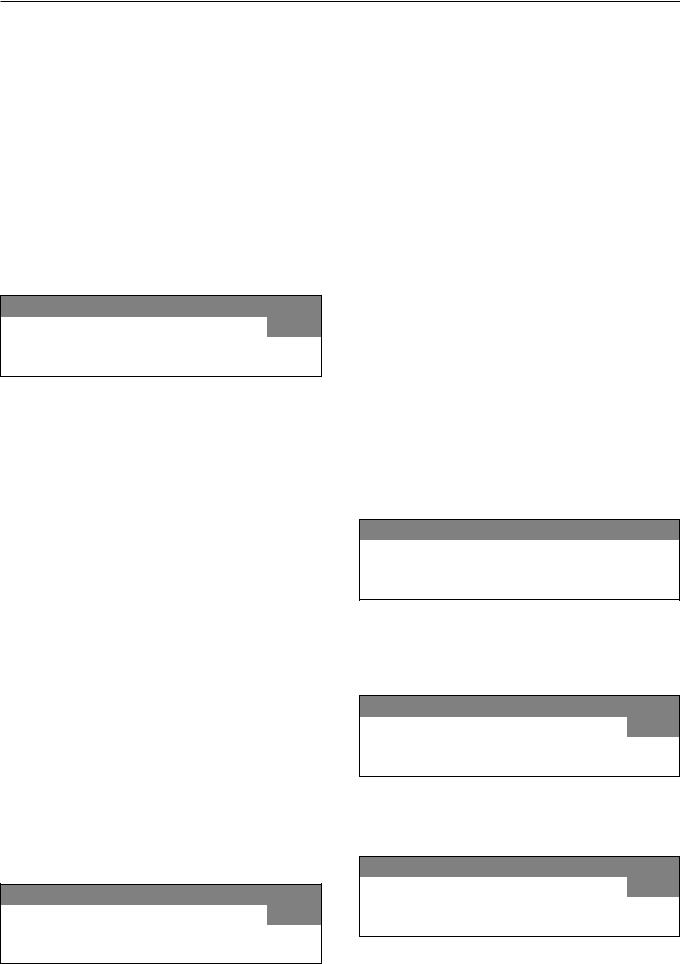
Optional modules
Operating data
By pressing the \ "Operating data" button, the module can be used to read or delete operating data either before the start of a programme, or after it has finished.
1 |
Cottons extra dry |
0% |
|
|
|
|
|
|
|
2 |
Cottons dry |
|
0% |
|
|
|
|
|
|
3 |
Cottons damp |
|
20% |
|
|
\ |
FC |
|
A |
|
|
|
|
|
After pressing the \ button the following will appear in the display:
Operating data module
Total data
Programme data |
e |
||
|
\ |
|
A |
|
|
|
|
Selection choice:
– Total data
In this option all programme data is collated and summarised.
– Programme data
Programme data contains all the data called up during a programme.
– Delete data
-Module (delete total data including programme data)
-Total data (only delete total data)
-Programme data (only delete programme data)
Pressing the button again deselects the \ "Operating data" option.
If there is no more memory available in the operating data module a message will appear after pressing the "Start" button to say that the operating data will be overwritten.
If you press the A "Back" button or do not press the "Start" button within 30 seconds, the display will revert to the way it was before starting the programme.
Total data
Operating data module
Total data
Programme data |
e |
||
|
\ |
|
A |
|
|
|
|
After selecting Total data, the following (example) will appear in the display:
Operating data module ~ Total data |
|
|||
Total time power on: 200,987 h |
|
|
||
|
|
|
|
e |
Operating hours: 123456 h |
||||
|
\ |
|
|
A |
Other options: |
|
|||
Total time power on: 200,987 h |
|
|||
Operating hours: 123,456 h |
|
|||
Duration heating active: 123,456 h |
|
|||
Duration drive motor active: 93,456 h |
|
|||
Programme starts: 23,456 |
|
|||
Programme stops: 567 |
|
|||
Programme cancellations: 67 |
|
|||
Amount of laundry: 1,234,567 kg |
|
|||
Energy: 12,345,678 kWh |
|
|||
Programme data |
|
|||
|
|
|||
Operating data module |
|
|||
|
|
|||
Programme data |
|
|
||
|
|
e |
||
Delete data |
||||
|
|
|
|
|
|
\ |
|
|
A |
After selecting Programme data the following |
|
|||
(example) will appear in the display: |
|
|||
Operating data module~ Programme data
1 |
Cottons extra dry |
0 % |
|
|
|
|
|
|
|
2 |
Cottons dry |
0 % |
e |
|
|
\ |
|
|
A |
|
|
|
|
|
Select the programme you want from the list and press the rotary dial to call up a list of all programme starts including date and start time for that programme (Cottons extra dry in the example).
Programme data ~ 1 Cottons extra dry Date: 21.05.2009 Start time: 11:30
Date: 21.05.2009 Start time: 12:30 |
e |
||
|
\ |
|
A |
|
|
|
|
Select the required programme start from the list for programme 1 Cottons extra dry and confirm your choice by pressing the rotary dial.
Programme data ~ 1 Cottons extra dry Date: 21.05.2009 Start time: 11:30
Name: Smith |
e |
|
|
\ |
A |
|
|
|
23
